
ECA Officers
West Bryant President 704 898 5044
Kenmore Avenue west.bryant@gmail.com
Evan Kettler
Vice President 704 577 4901 North Laurel Avenue evan.kettler@gmail.com
Sarah Crowder Secretary 704 502 7866
Greenway Avenue sarahcr@bellsouth.net
Danielle Kleinrichert Treasurer
704 804 1509 Pecan Avenue danielle@neatbooks.co
Paul Shipley
Past President 704 651 5897
Kenmore Avenue paul.d.shipley@gmail.com
ECA Board Members
Isabelle Cosgriff
At-large 919 623 7855
North Dotger Avenue isabellecosgriff@gmail.com

Eric Davis Transportation Chair 704 776 3013 Greenway Avenue ericadavis0123@gmail.com
Lauren Gomez Membership Chair 704 728 2066 East 5th Street laurenmcjo@gmail.com
Teddy Koch
At-large 336 830 0425 Greenway Avenue teddykoch@gmail.com
John F. McBride Newsletter
980 254 7367 East Eighth Street john.f.mcb@gmail.com
Nikki Moore
Social Chair 704 576 6474
Kenmore Avenue nikki.s.moore@gmail.com
Debbie Rubenstein Communications 704 998 9579 East Fifth Street debbie@flynnonline.com
Elaine Scott Beautification and Trees 704 905 7352 Kenmore Avenue elainekscott@icloud.com
Robert Zabel Elizabeth 8K Road Race Chair 917 873 8028
Pecan Avenue nycrcz@yahoo.com
Officer Jim Gilliland CMPD neighborhood community coordinator 704 336 2878 james.gilliland@cmpd.org
Annual meeting reminder
Don’t forget the annual ECA meeting will be held in September. Watch the ECA notification list for the latest information. To sign up for the ECA notification list, head to elizabethcommunity.com and click on the email groups tab at the top.
M M
VOLUNTEER
elizabethcommunityassociation @gmail.com
The ECA Newsletter
The ECA newsletter is published quarterly (March, June, September and December) and delivered to homes and businesses in the Elizabeth neighborhood of Charlotte. The production team:
John McBride editor
Robb Beatty advertising czar
Jeremy Deese circulation czar
Susan Green editorial assistant and proofreader
Little Shiva designer
The UPS Store printer
We’re looking for you
Frustrated by not getting enough neighborhood updates or stunning Elizabeth photos or sexy board minutes from the ECA? Help us out!
We’re looking for someone with interest and skills in social media to help with Instagram and Facebook posts and someone to help us create a new and more responsive website. Contact Debbie Rubenstein at communications@elizabethcommunity. com if you are interested.
Stunning Elizabeth photo by John McBride
On the cover
A look into the past at what was once Royal Gardens garden shop on East 7th Street is being prepared for demolition. Photo by John McBride
THE PEOPLE PAGES 2
Ryan Allen East 7th Street fryedchickensandwich @gmail.com
Kris Solow East Fifth Street kjsolow@gmail.com

contributors
West Bryant East Fifth Street west.bryant@ gmail.com
Lois Stickell Lamar Avenue sstickell@hotmail.com
Jim Dimitroff Pecan Avenue jimdimitroff@ gmail.com
James Webb East 5th Street james.lucius.webb@ gmail.com
Mark Hermann East 5th Street markh@ carolinaadvisory.com


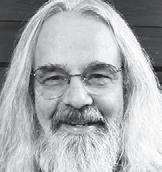







Cheralyn Lambeth Vail Avenue cheralyn.lambeth@ yahoo.com
Chaz Hinkle East 7th Street chazzerguy@ gmail.com
Pam Imhof Central Avenue imhofp88@gmail.com
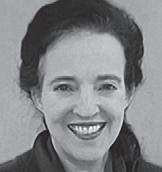


Nikki Moore Kenmore Avenue nikki.s.moore@ gmail.com

Phil Yagla Pecan Avenue pyagla@gmail.com

Jim Morrill Kenmore Avenue jmorrill634@ gmail.com

Robert Zabel Pecan Avenue nycrcz@yahoo.com
Clifton Settlemyer Clement Avenue csettlemyer@ carolina.rr.com
This could be you! To contribute a little of your time and talent to the ECA newsletter, write to john.f.mcb@ gmail.com
THE PEOPLE PAGES 3
From the president: A wonderful neighborhood with a bright future
by West Bryant
It has been an eventful three months since the last issue of this newsletter! The Elizabeth 8k got faster, the egg hunt made an impressive pivot in difficult weather conditions, and we got great feedback from ECA members regarding the proposed updates to the bylaws. There were also several meetings for and against the Local Historic District (LHD). I wrote in the last issue about my journey exploring the advocates’ proposal, and why I voted with the majority of the ECA board not to support it.
In this episode I wanted to focus on one of the key themes I have heard in the meetings pitching LHD. It can be paraphrased as: Bad things are happening and things are going to get worse if we don’t accept new restrictions and fees right now.
As a long-time resident, this viewpoint seems inconsistent with reality. I admit that I’m biased regarding the exquisite wonders of Elizabeth, but the general feeling I have is that Elizabeth rocks. I thought it would be helpful to gently dispel the “things are bad” myth, with a focus on the place, the people and the opportunities we have as a community.
The place is obviously Elizabeth – our cozy corner of
Charlotte. It was amazing when I moved here in 2009, and it has consistently become better since. Independence Park is newly renovated and now has a vibrant mural, upgraded sports fields, new and old trees, updated playground equipment, a bathroom and beautiful walking paths for all to enjoy.
Speaking of which, about a month ago I started asking random people in the neighborhood what they loved most about Elizabeth. It was astounding how many instantly said, “Walkability!”
Friends and neighbors can be seen at almost any time of day walking their dog, heading to a nearby restaurant, or simply out and about for a stroll or a jog. Bars, businesses, gyms, offices, houses of worship, non-profits and restaurants provide great places for us to meet, work and play.
Buildings that had reached the end of their useful life in their prior form have been improved or replaced and are now beautiful places to live and work.
In the residential sections of the neighborhood, we’ve maintained a mix of new and old single- and multi-family dwellings. Over the last 34 years we have retained 81% of the historic structures in the neighborhood without the need for restrictive zoning. Great job, everyone!
Neighbors have added new homes to our community as well.
I have watched for years as these new homes have become a part of the melting pot of Elizabeth’s architecture, and I am overjoyed that the people living inside them have likewise become an integral part of our social fabric.
When it comes to people, you can’t walk two blocks in Elizabeth without bumping into a thoughtful, interesting, brilliant, unique and friendly human being. Every year, hundreds of individuals of all ages donate thousands of hours of time to making things better here. Some of the most active volunteers in Elizabeth don’t live here at all, but rather work here. I am incredibly thankful for everyone’s contributions.
Elizabeth boasts a broad set of residents in different stages of life including students, civil servants, medical professionals, artists, retirees, bankers, teachers, musicians, architects, writers, entrepreneurs, attorneys and households of every type. We’ve been warned about developers doing nefarious things in Elizabeth, but it turns out developers also live and work amongst us. Most of the developers I have met aim toward creating a useful and beautiful product, are willing to work toward rational win-win scenarios with the ECA, and would much rather create something that is valued by existing residents rather than despised. In the case where there is a significant divergence
4 THE PEOPLE PAGES
During the reopening celebration, the county will dedicate a “permanently and strategically placed interpretive panel” commemorating a cemetery of enslaved people that is believed to have existed in the park.
REOPE N I NG!
County-sponsored Independence Park reopening celebration

Thursday, June 29 10 a.m. to 11:30 a.m.
This event will take place on the playground/sports fields side of Independence Park in front of the newly installed permanent restrooms.
Parking is available in the CPCC deck on the corner of Charlottetowne and 7th, although the county encourages participants to walk or bike if possible.
This official reopening event will feature speakers from the county as well as ECA president West Bryant. A food truck will be available for drinks/snacks.
ECA-Sponsored Picnic in the Park Event
Thursday, June 29 6 p.m. to 8 p.m.
Celebrate the return of our beloved park by packing a picnic and joining your neighbors in the park for live entertainment featuring neighborhood talent.
More details to follow.
Photo by John McBride
with a developer, the ECA knows how and when to push back because of the team’s expertise that has been developed over years. I learned that some of our neighbors have specifically chosen Elizabeth as their home to escape the same restrictive zoning that we are being asked to support. These neighbors tell me that they moved here specifically because it is so much less cumbersome to improve their homes, and thus that right is one of the things that makes our neighborhood wonderful.

Lastly, the opportunities we have are exciting. Our most valuable resources are time and people, and by investing them wisely our opportunities have expanded. Due to the highly skilled efforts of volunteers, we have consistently been able to monitor and influence develop-
ment in our neighborhood. By working together, the ECA Transportation and Land Use and Development committees have created a productive working relationship with Charlotte DOT to work on a win-win plan for 7th Street that aligns with our community’s goals and with the city’s vision. There is an opportunity to explore new zoning overlay options in the Unified Development Ordinance (UDO), which address neighbors’ concerns in a more effective way with far less economic and administrative burden. Why not wait a tick and see if it is a better fit than LHD? Elizabeth has been around more than 100 years so we’ve got time. Most importantly, we have an amazing opportunity to welcome the next generation of Elizabethans to our community and pass on the lessons we have learned.
Many new neighbors are excited to learn how they can help in the neighborhood. One day, these neighbors will accomplish audacious goals, create the next great businesses and ultimately be responsible for continuing to hone Elizabeth into the best place to live and work in Charlotte. Let’s make sure that we make it as accessible for them as it was for us to renovate and adapt their homes and their neighborhood.
The undeniable truth about Elizabeth is that it is just plain wonderful and trending toward an even brighter future. Anyone that comes to me with a glasshalf-empty perspective will receive an appropriate amount of skepticism. I will always keep listening and learning though, so please let me know what you think: president@ elizabethcommunity.com.
‘Liz Kids Fun Run participants flee from Big E Elvis. All race photos by Jim Dimitroff
After another great Elizabeth 8K, a look back on 10 years of setting the pace
by Robert Zabel
It’s been 10 years since I inherited the role of race director for the Elizabeth 8K, and so I thought it would be interesting to provide the 2023 race recap in the context of my top 10 takeaways over the past decade.
1. Growth: We often refer to the Elizabeth 8K as a “mid-major” race. We will never be Charlotte’s largest road race, nor should we be. But we have purposely grown the number of participants since 2013. Nearly 1,000 people from 12 states and 102 ZIP codes

registered this year, which was 9% more than 2022, 22% more than the average of 2013-2019 and 53% more than the average of 2008-2012. Growth allows us to exploit greater economies of scale and to reinvest in the race and the community.
2. Experience: If not the biggest, then we shoot for being the best. Each year we set out to curate a meaningful, memorable and differentiated experience, from pre-race to post-race. This year was our best with 96% of survey respondents being “very satisfied” or “somewhat satisfied” with the event. Over the years we’ve increased our marketing, branding, social media and participation in run club events.
On race day, runners and volunteers were once again greeted and serenaded by Elvis “The Big E” to get everyone in the mood, and dare I say, “all shook up.” We upgraded our start and finish line with Elizabeth 8K signage, and for the eighth year have had Opera Carolina sing a moving rendition of the “Star-Spangled Banner” to start the race. Our post-race festival was our biggest and best yet, with many of our amazing sponsors present and giving out cool swag, a beer garden serving “Under the Water Tower,” an IPA specially brewed for our race, and an awards ceremony that included some of the most unique and significant prizes of any race.
THE PEOPLE PAGES 7
Thank you to our 2023
Elizabeth 8K sponsors and partners
Titanium Sponsors
Harris Teeter
Hawthorne’s NY Pizza & Bar
Novant Health
Pepsi
Platinum Sponsors
ColsenKeane Leather Goods & Provisions
ELIZABETH on Seventh by Crescent Communities
Devil’s Logic Brewing
Freixenet Mionetto USA
The Keith Corporation
Lineberger Dentistry
Lucas Chiropractic and Acupuncture
Main Street Insurance Group
Rob Hall from Pridemore Properties COMPASS
Queens Pharmacy
Gold Sponsors
BB+ M Architecture
Catalyst Financial Group
Cheat’s Cheesesteak Parlor
Cluck Design
Cross Conditioning Training
The Crunkleton
Jay Seago from Helen Adams Realty
Historic Elizabeth Neighborhood Foundation
ISI Elite Training
St. John’s Baptist Church
The Spoke Easy
Summit Coffee
The Wine Vault
Wilder Pantazis Law Group
Partners
TreesCharlotte runCLTrun

8 THE PEOPLE PAGES
But it’s the experience on the course as well. We all know that Elizabeth is one of the best places to run in Charlotte, and our course takes advantage of everything the neighborhood has to offer. From the beautiful tree canopies and the thriving streetscape to the enthusiastic neighbors who hosted or participated in cheer parties, to the police, medics and volunteers who helped to ensure a safe experience.
3. Competition: Another unique aspect of the Elizabeth 8K is our ability to attract some of Charlotte’s fastest runners and this year was no exception. Congratulations to the top three male (Eric Westog, Beck Classey, Dalton Randall) and female (Hannah McEntire, Emily Cantrell, Anne Fechtel) finishers. But there were hundreds of other runners ages 9 to 81 with all levels of experience and speed, each with their own personal motivation to compete. The Elizabeth 8K is a race for all and we congratulate you all!
4. Children: When I became race director in 2013, my daughter Alaina was 4-yearsold and participating in her second ‘Liz Kids Fun Run. At 6, she started running the untimed 1.5M race with her neighborhood friends and classmates, and at 9 ran the 8K for the first time. For the past two years she’s competed in her middle school cross country and
track teams, met and trained with new friends at running camps and is excited to continue her running next year at MPHS. I share this only to say, I LOVE the ‘Liz Kids Fun Run and 1.5M race because it provides a unique opportunity for kids to get out there and have fun with their friends, family and most certainly Elvis, and to potentially spark an interest for running that they will hold onto. I believe the Elizabeth 8K has done that for Alaina and hope it has for many others.
5. Construction: We see it happening around us every day, and it impacts us all in different ways. With the race, whether it was installation of the streetcar tracks, replacement of the Hawthorne bridge, demolition of Martha Washington apartments or renovation of Independence Park, the continuous development forced us to revise our course on several occasions. But as Churchill once said, “To improve is to change; to be perfect is to change often.” I won’t say this year was perfect, but it’s getting closer. The runners loved the reduced number of turns, longer straightaways, gorgeous tree canopies and the common start/ finish line.
6. Sponsors: The excitement and support for the race is not limited to runners. Organizations recognize the value of these participants, want to give back to the neighborhood they serve
and appreciate the opportunity to interact with them locally. We are fortunate to have tremendous sponsorship for this race and love that it’s a healthy mix of local, regional and national organizations. This year’s revenues from our 27 titanium, platinum and gold sponsors increased 13.6% over 2022 and was 97% more than the average of 2013-2019. We thank all our sponsors for their commitment and passion to this event and the Elizabeth community. Without their support, this race would not be possible.
7. Trees: We like to think the Elizabeth 8K has become synonymous with trees. Not only is it core to our branding, but tree replenishment has served as our primary mission for the race since 1989 when Hurricane Hugo devastated much of our tree canopy. During the early years, a portion of race revenues were used to subsidize the purchasing and planting of nearly 200 trees. In 2013, we partnered with TreesCharlotte to increase the impact our race has on replenishing and diversifying the tree canopies throughout Charlotte. The ECA has since donated over $20,000 of race proceeds to TreesCharlotte.
8. Community: I moved to Elizabeth in 2006 and immediately felt a connection to this neighborhood and ultimately to this community, which was further reinforced when I learned
THE PEOPLE PAGES 9
it was the host of the oldest 8K in Charlotte. In my early years as race director, as rapid growth and development was occurring in neighborhoods surrounding Elizabeth, we saw an opportunity to expand our outreach and partnerships to promote the race, which we’ve continued to do with many neighborhoods, organizations and races over the past ten years. The Elizabeth 8K is now tightly woven into the fabric of the Charlotte running community, and although we might be biased, has also indirectly supported the growth and development of our neighborhood. Every year Elizabeth welcomes participants from both near and far to showcase the beauty of this neighborhood and, more importantly, how special, and unique this community is, and for that, we thank YOU!
9. Tragedy: We are not professionals, and over the years have had to learn a lot about organizing a road race. But sometimes events occur that even the professionals aren’t prepared for. Five days prior to the 2013 race, a tragedy occurred at the Boston Marathon, killing 3 and injuring 264, including Nicole and Michael Gross from Charlotte. Being the first race after the bombing, the Elizabeth 8K became a backdrop for local media outlets. We collaborated with CMPD on what, if any, additional security was April showers? No problem for
 intrepid ECA volunteers. The ECA’s first ever drive through Easter egg hunt on Oakland Avenue next to Hawthorne Lane United Methodist Church was a great, if soggy, success. Hats off to Nikki Moore, Chris Mullis and the entire team of egg stuffers and deliverers.
Photo by Nikki Moore
intrepid ECA volunteers. The ECA’s first ever drive through Easter egg hunt on Oakland Avenue next to Hawthorne Lane United Methodist Church was a great, if soggy, success. Hats off to Nikki Moore, Chris Mullis and the entire team of egg stuffers and deliverers.
Photo by Nikki Moore
required. We planned how we would acknowledge the event with our participants and volunteers. We ultimately dedicated the race to Nicole and Michael, held a 26-second moment of silence, provided blue and yellow ribbons to all our runners to wear in honor and remembrance of the victims, and we collected donations for One Fund and Boston Strong.
Eight days prior to the 2020 race, we made the decision to cancel the event due to the COVID-19 pandemic. With no precedent to follow, and before virtual races became a thing, we needed to figure out how to best unwind our race with registrants and sponsors. In partnership with the ECA, we quickly formed a new initiative called ElizabethCares to support front line workers and those individuals and businesses in need. Through the generosity of our race sponsors and the ECA, more than $25,000 was disbursed to selected charities supporting COVID-19 relief.
This year was a “normal” race. We continued to deal with challenges as they occurred, but one thing we’ve learned is that when we bring the right people together, any challenge can become an opportunity.
10. Committee: I’ve attempted to the best of my abilities to write this using the “we” pronoun, because since 2013 it’s been a team
effort. I’d like to thank Brian Rubins and Marshall Lindsay who have been there since day one leading race operations and awards/swag respectively, Tommy Franklin, who leads our large sponsor relationships, and non-Elizabeth residents, Lisa Landrum and Brian Mister who help expand our marketing, social media and outreach to the running community.
But as was once said, we must not let the memories of our past limit the potential of our future. Will the race return to Memorial Stadium, or be the kickoff to an all-day Elizabeth Festival? Will it double in size or have a timed 1-mile sprint event? What ‘Liz Kids of today will be future track stars of tomorrow? These are all great questions to ponder, but for now, let’s take a moment and celebrate this community for helping to make the 2023 Elizabeth 8K the best race ever. Until next year, godspeed!
LHD: A perspective from a ‘non-contributing’ neighbor by Phil
Yagla
Many of you may not know me yet, as it’s my wife Lisa who is our family’s more public face in the neighborhood.
Since moving to Elizabeth in 2015 with our two boys (aged 1 and 4 at the time), she’s the one who has volunteered her time to serve on the ECA board, the Land Use and Development committee,
signed us up to host the progressive dinner, distributed newsletters, volunteered her father and me to refine the Pumpkin Wall letters, and even created the Merry Meander. I’m mostly just along for the ride in a supporting role (someone’s got to get dinner on the table and keep the house in order).
While I’m usually the quiet one, I feel the need to speak up about Local Historic District (LHD). I had originally planned to write this article from my perspective as a residential architect and history lover. I grew up in a Virginia Historic Landmark home that was built in 1674 (yes, when the Catawba tribe ruled this land), so I know a thing or two about old houses. I have a deeply ingrained love for them, which is why I wanted to explain my conceptual and social objections to the idea of locking the entire neighborhood into a very specific set of rules in perpetuity.
However, after seeing yard signs in support for LHD pop up around the neighborhood, I think it’s more important now to make my voice heard as a “noncontributing” neighbor. “Noncontributing” in an architectural sense of course, because that’s how we’re listed on the Historic Elizabeth Neighborhood Foundation (HENF) survey. My home would not have been allowed to exist under LHD rules. The home I designed for
THE PEOPLE PAGES 11
our family on a vacant lot at 421 Pecan Avenue (next to the comic book store) was born in response to our location in the neighborhood: next to and across from two bustling commercial strips, backing up to a parking lot and facing a busy street. So no, I did not design a bungalow. I designed our home to meet our family’s needs in a style that we liked and within a budget we could afford. The freedom to do so was a major attraction to join this neighborhood.
At HENF’s LHD meeting on Mar. 16 supporters made a persuasive argument to keep the scale of the neighborhood intact – to make sure development is more “considered” and to put up guardrails to protect us from “the worst.” But if these are in fact the goals, there is another perfectly viable method to achieve them – one that other neighborhoods in North Carolina have already put in place. It’s called a Neighborhood Character Overlay District (NCOD), which limits its reach to only these concerns.
Perhaps some or even many of you are unaware of this option (as I was until recently). With an NCOD, Elizabeth could control building heights, setbacks and parking for new development without also ceding near complete aesthetic control of our homes to an unelected government board. HENF’s pursuit of LHD instead of NCOD makes me question
if some supporters might also be interested in having these aesthetic controls over the decisions our neighbors make.
My family’s home (and many others) quite simply do not comply with the LHD’s design standards. So I cannot help but take it personally when I walk past a sign in a neighbor’s yard that, in my mind, may as well read, “We don’t want your home here, and we’re rallying a vote to keep people like you out.”
Perhaps that sounds extreme, but speaking as your neighbor, this is exactly how it feels to see these signs every day. For the first time in my eight years in Elizabeth, we feel unwelcome.
Though my family’s home may be non-contributing, the people inside it most certainly aren’t. And we are of the belief that it’s been the diverse, energetic, creative and forever-evolving residents that have made Elizabeth such a great place to live. Let’s keep it that way.
A generation ago, historic designation for Elizabeth comes – and goes
by Jim Morrill
The last attempt to make Elizabeth a Historic District was marked by battles over property rights, petition deadlines and two words in a legal ad. In the end, proponents won on a tie-breaking vote by the Charlotte mayor.
It didn’t last long. The council approved the Elizabeth Historic District in November 1995. A week later, one resident sued to stop it. And in 1997, a Superior Court judge ruled the ordinance creating the district “null and void,” officially ending the effort.
“It was like the air had been taken out of the balloon,” Lee Fazzi, whose wife, Chris Burns-Fazzi, was president of the Elizabeth Community Association, said. “We knew it was DOA at that point.”
Now, a quarter-century later, some residents are again pushing to make Elizabeth a historic district. Like the first time, there are neighbors on both sides. Proponents want to protect the character of the neighborhood. Critics again cite property rights, red tape and added costs for opposing it.
But there are differences
The ECA favored the historic district in 1995. The board then voted unanimously to pursue it, according to city documents. But in 2021, the board voted 10-1 to reject a proposal to work with the Historic Elizabeth Neighborhood Foundation to advance the effort. The ECA’s three most recent presidents oppose it. In 1995 opponents formed the Elizabeth HeightsRosemont Association and mounted a petition drive. But Burns-Fazzi said there had been wide support for the historic district in the ‘90s.
12 THE PEOPLE PAGES
“I felt that it was overwhelmingly supported,” she recalls. “There were some people who didn’t support it because they thought it would be an infringement on their rights. But they were few and far between.”
One issue in 1995 was the city’s legal notice about the proposed district. In describing the affected property, the notice described an area “bounded by” Independence Boulevard, Central and Kenmore avenues and the Seaboard Railroad rightof-way. Ray Warren, who with his wife owned property on the west side of Kenmore, said at the time that he believed the wording was vague. He believed his property

was outside the proposed district.
“It was not very well explained,” he said recently. “The Elizabeth association at the time, we felt, was very much steamrolling it.”
Another issue involved a so-called protest petition. The petition originally had the signatures of enough property owners to trigger the need for approval from three-quarters of the city council as opposed to a simple majority. Protest petitions had to be signed by owners of at least 20% of all the land in the proposed district. (That process is no longer in use). But some people who’d signed the petition began taking their names off, including
at least one developer who owned multiple properties. Some saw hardball politics involved.
“I will keep you informed of any additional contact I have with anyone from either the ‘North’ or the ‘South’ in this notso-Civil War!” a city staffer wrote the city attorney.
By October 1995, enough people had withdrawn their names to fall below the 20% land threshold needed to trigger the three-quarter vote by council. By the time other people wanted to sign it, the city said the deadline had passed. That meant a simple majority of council would decide.
In November 1995, the council voted. The result:
After 10 p.m. on Feb. 22, an SUV came barreling down East 8th Street toward Hawthorne Lane and, after narrowly navigating the traffic circle at Lamar, proceeded to sideswipe five cars parked on the west side of 8th before coming to a halt in the yard of 1710 E. 8th St. Afterward, the driver of the SUV got out and expressed surprise at what happened. No one was injured, but most – if not all – of the five cars were totaled. Photo by John McBride
a 5-5 tie, since one member was absent. Voting for it was one future mayor, Democrat Patrick Cannon; voting against it was another, Republican Pat McCrory. Breaking the tie in favor of the district was thenMayor Richard Vinroot, a Republican. (Republican Mike Jackson, who missed the vote, said later that he opposed historic designation. That would give council opponents a majority.)
A week after the council vote, Warren – then a Superior Court judge – sued to withdraw his property. Among other things, the suit said not letting more people sign the protest petition after the deadline marked an unfair “one way street” for supporters. But the district took effect. Cynthia Drum, who still lives on 5th Street, was one of two people who represented Elizabeth on the city’s Historic District Commission. “We had all kinds of issues going on,” she recalled. “Every little thing has to be approved.”
But in October 1997, Superior Court Judge Richard Doughton formally ended the effort. According to The Charlotte Observer, he called the city’s legal notice “inadequate.” He also disputed the city’s decision to allow the withdrawal of protester signatures while not accepting new ones. “It was a huge amount of effort,” Burns-Fazzi said. “Nobody had the energy to try to do it again in pieces.”
A short recap of recent HENF events by
Clifton Settlemyer
Editor’s note: Clifton Settlemyer is president of the Historic Elizabeth Neighborhood Foundation (HENF). The views and opinions in this article do not necessarily reflect the official policy of the ECA.
Much work still needs to be done, but the HENF board believes it is on track to achieve a Local Historic District (LHD) for Elizabeth by the first quarter of 2024. Here is a quick timeline of recent milestones.
Mar. 5: HENF submitted its historic district application to the Charlotte Historic District Commission (HDC). Among other documents it included a survey of every building in Elizabeth prepared by Susan V. Mayer of SVM Historical Consulting. Her report revealed that Elizabeth has lost over 200 historic buildings since 1988. The application also proposed a boundary for the district that closely follows the National Registry of Historic Places boundary that was established for Elizabeth in 1988.
Mar. 16: The first community informational meeting held by HENF was attended by an estimated 135 people. The meeting introduced LHD to the audience and the Unified Development Ordinance (UDO) was discussed.
Mar. 23: The HENF board and District 1 City Council member Dante Anderson had the opportunity for a question and answer session with the HDC on the upcoming LHD process.
Apr 20: The second community informational meeting held by the HENF focused on the process for obtaining certificates of appropriateness (COAs.) Under LHD, property owners would be required to obtain a COA before making changes to the exterior of their properties. HENF presented nine case studies from the HDC archives that illustrated the process from small to large.
Apr. 29: HENF was at the Elizabeth 8K Road Race with a promotional table. The weather was perfect for the runners. The ECA volunteers’ organizational talents were remarkable. Our volunteers handed out stickers and yard signs. Out-of-town visitors raved about Elizabeth’s beautiful old houses and lush tree canopy.
May 10: HDC delayed a vote on the LHD application until September. If the application is approved, HDC will forward it to the State Historic Preservation Office (SHPO.) The state will rule on it within 30 days.
September: Voting by property owners is planned to begin in late September. The HENF will provide information on the voting process in advance of the actual voting.
14 THE PEOPLE PAGES
More information is available at www.historicelizabeth.org
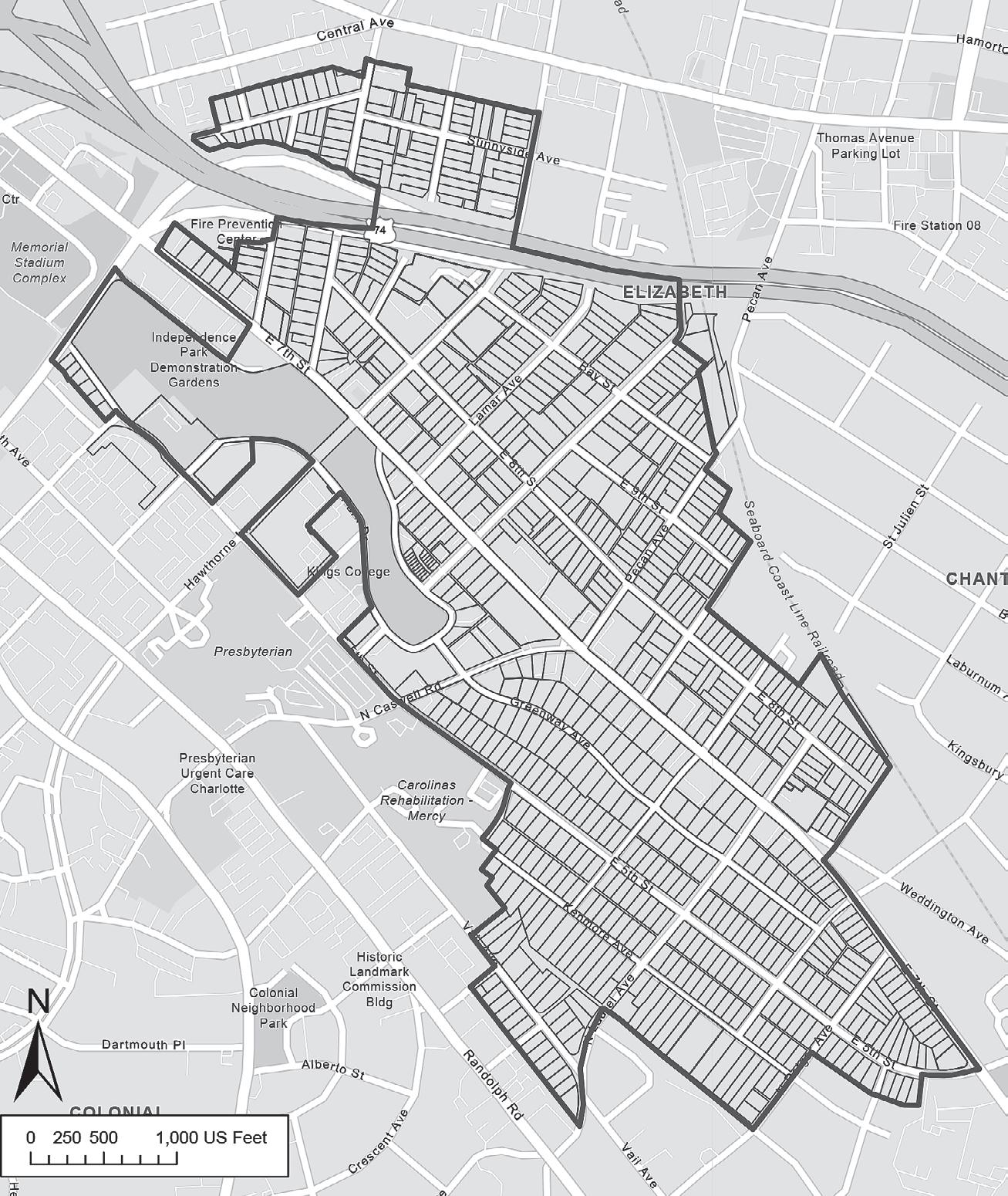
THE PEOPLE PAGES 15
The proposed local historic district boundary, provided by the Historic Elizabeth Neighborhood Foundation.
Remodeling your home?
There’s a state tax credit for that
by Mark Herrmann
If a deduction is available on my taxes, I will take advantage of it. Fortunately, the intersection of tax credits and preservation of our home comes together beautifully through the North Carolina State Historic Preservation Office. In the span of our homeownership in Elizabeth, we have personally saved tens of thousands of dollars in state taxes. We are about to embark on our third renovation (hopefully last!).
Overview
To qualify for the 15% tax credit, the requirements are pretty simple:
• The rehabilitation of the historic structure must exceed $10,000 within a 24-month period.
• Eligible rehab expenses must be incurred within the defined 24-month period, though the overall project may take longer than 24 months.
• Eligible rehabilitation expenses are limited to $150,000, with a maximum tax credit of $22,500.
• Taxpayers may undertake one rehabilitation project every five years for this program.
• All rehabilitation work must meet the secretary of the interior’s standards for
rehabilitation.
• This is for non-income producing properties.
Regardless of total rehabilitation expenditure, the state Historic Preservation Office will review all work for compliance with the Standards.
An example is a renovation costing $250,000. Only the first $150,000 is eligible: $150,000 x 15% = $22,500.
The state income tax rate is 4.75% for 2023, so a family with earned income of $200,000 would owe $9500 in state income taxes. Once the above project is completed, you can apply the $22,500 tax credit toward 2023 taxes, leaving $13,000 to be applied to future years.
Application process
Property owners are strongly advised to consult with the state Historic Preservation Office before beginning a rehabilitation to resolve potential design and rehabilitation problems that could result in the denial of the credits.
There is a two-step tax credit application process.
Part A: The “description of rehabilitation” consists of detailed descriptions of existing conditions and the proposed work, overall before rehabilitation photos and plans or drawings, as needed, to fully describe the scope of the rehabilitation project. For this
you have to have a floor plan of your existing home, photos, the suggested improvements with the new floor plan and a description of the work being done.
Part B: The “request for certification of completed work” consists of photos documenting the rehabilitated property and documentation that the building contributes to a National Register Historic District. No documentation is needed for properties individually listed on the National Register.
Fee payment is due with Part A and B applications, based graduated fee schedule.
Claiming the credit
The credits cannot be claimed against the cost of acquisition, new additions (volume increase), site work or personal property.
Generally, costs incurred for rehabilitating the existing structure will qualify as rehabilitation expenses. In our case, years ago we “popped the top” converting a bathroom, bedroom and closet into a much larger space. The location of the exterior walls didn’t change. We simply made better use of the perimeter to maximize the interior.
The tax credits must be claimed the year the remodeling is completed and placed back in service. Any unused credits from year one may be carried forward for the following nine years.
Credits may be transferred
16 THE PEOPLE PAGES
with property so long as transfer of property occurs before the structure is placed in service.
My contacts at the preservation office were: Brett Sturm, brett.sturm@ncdcr.gov and Mitch Wilds, mitch.wilds@ ncdcr.gov.
Mark Herrmann has been an Elizabeth resident for over 28 years. He can be reached at markh@ carolinaadvisory.com
Water pressure good?
Thank the Tank
by Lois Stickell
Seventeen years ago the City of Charlotte contracted to dismantle four water towers.
Three were demolished. However, the decision was made to keep the fourth because Charlotte had experienced significant growth in the late 1990s and 2000s, including infill development.
That water tower still stands at the corner of Pecan Avenue and East Eighth Street. Charlotte Water’s official name for it is the Pecan Avenue Tank but most in the neighborhood know it as the Elizabeth Water Tower.

Construction on the 150-foottall steel tower took place quickly. The contract was awarded in the summer of 1937 and the tower was completed nine months later. On March 28, 1938, it was
connected to city water. That night it was filled with a chlorine solution, which firemen flushed with hoses before the tower was put into service. From that point on, through the miracle of gravity, thousands had consistent water pressure no matter how many people were using the system. The stabilized pressure also ensured optimal fire protection for the public and continues to do so today.
The Elizabeth Water Tower was built during the Great Depression when surrounding houses on side streets were typically small bungalows. Grander residences lined Clement and Seventh.
The neighborhood icon watches over a trio of stores in this photo from the late 1940s.
Photo courtesy of Millican Pictorial History Museum - MillicanPictorialHistoryMuseum.com
Page A. McCleary, chief clerk for Southern Railway, could see the tower take shape from his vantage point at 2016 E. Eighth St., a house that still sits just below the water tower.
Real estate developer J. P. Hackney’s large house with wraparound porch, where Pecan Point is today, also had a front row seat. The Hackney house is long gone, but other buildings from the era remain, some repurposed. In 1938, residents purchased groceries at the A&P where Crunkleton’s now sits and picked up prescriptions at Stanley’s Drug Store, now a Starbucks.
In the late 1980s and early ‘90s, a person or persons unknown clandestinely climbed the water tower and painted “Stanleyville, U.S.A.” in huge letters. The area was broadly known as Stanleyville because of Stanley Drugs. Although the city painted over the lettering, some disappointed supporters held a benefit concert to raise money to re-paint the name Stanleyville on the water tower. The director of the Charlotte-Mecklenburg Utility Department warned that was illegal and would be considered vandalism. Eventually, Stanley Drugs closed and even the “state of mind” known as Stanleyville has faded. One rare piece of concrete evidence is the remnant of a small sign near the back door of Starbucks.
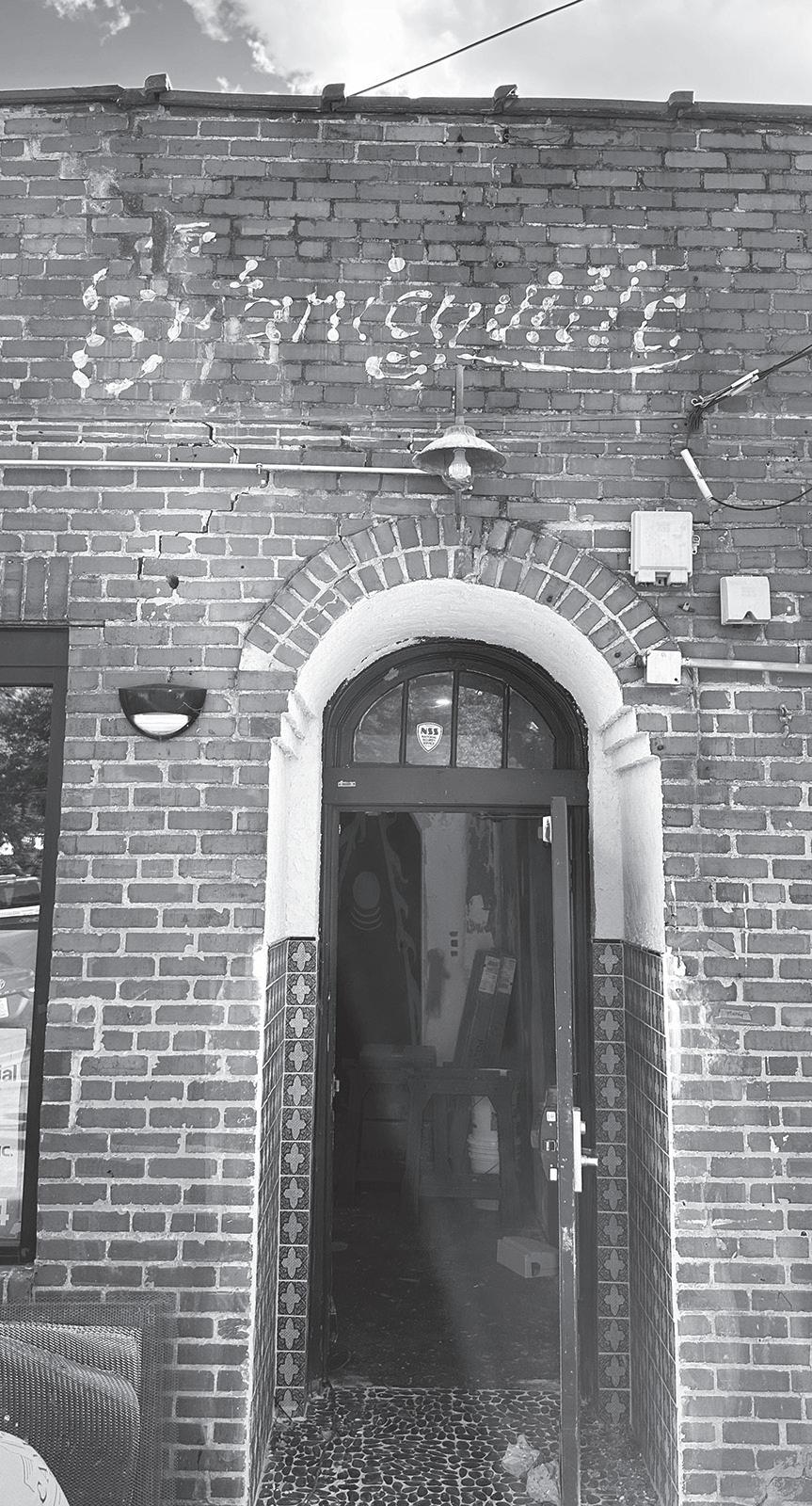 The state of mind known as Stanleyville has faded. Photo by John McBride
The state of mind known as Stanleyville has faded. Photo by John McBride
Today the Elizabeth Water Tower is one of 11 Charlotte water towers. The tank’s one million gallons of water is turned over daily to assure the highest quality water. It is inspected and cleaned every two to three years. A metal fence surrounding the tower is decorated with artwork.
Although the water tower may seem a vestige of the past, it continues to serve the community. Each night, water treatment operators fill the tanks to prepare for your morning shower.
Special thanks to Cam Coley of Charlotte Water for providing information for this article. And a tip of the ECA newsletter hat to longtime Elizabethan Mike Watson for this story idea.
Why I use the Gold Line streetcar for my daily commute
by Chaz Hinkle
Stuck in traffic on 7th Street?
There is a safe and reliable alternative: the Gold Line streetcar operated by the Charlotte Area Transit System (CATS) – and it’s not just for getting to concerts and weekend sporting events.
According to the city’s Charlotte MOVES Task Force report from 2020, three quarters of commuters drove solo to work. Another study published in 2022 by Compare Car Insurance estimates an astounding 89% and ranked Charlotte as the sixth most car
dependent metro in the US.
The new transit plan hopes to add 90 miles of rapid transit. The goal: get single car ridership down to 50%. Our neighborhood is a model of what is envisioned for the Charlotte 2040 Comprehensive Plan, with five streetcar stops on our doorstep. But not everyone is taking advantage of the streetcar. So my goal in writing this is to maybe, just maybe, get you to consider a different way.
Getting transit to work for the City of Charlotte means first getting it to work for Elizabeth. My morning commute? We live at the Elizabeth Station Apartments, the tacky orange and blue (go Clemson?) buildings just up the hill from Lupie’s Cafe. My destination is Optimist Hall, five days a week. I leave no later than 7:20 a.m. and walk to Hawthorne. The streetcar arrives around 7:45, and from there it’s 15 minutes to the transportation center. After a short wait (10 minutes or less), I transfer to the Blue Line, arriving three stops later at Parkwood Station around 8:15. I am at my desk by 8:20.
I know what you are thinking: “That’s an HOUR! I could drive that in TEN MINUTES!” Yes, you could. But I would make an argument in favor of the quality of my commute. The walk, seeing neighbors – it’s a nice way to start the day. I can hotspot my phone and connect my laptop. And I get all self-righteous about my
carbon footprint, how I am saving the planet, blah blah blah. Yes, I am a blast at parties. All of this while letting traffic be somebody else’s burden.
This is not my fastest option. The inbound 27M bus stops outside my door. Taking the bus would save me twenty to thirty minutes, but it’s frequently standing room only by the time it gets to Elizabeth. Additionally, CATS has had some reliability issues (and bad press) with buses showing up late or not at all. Meanwhile my experience with the Gold Line has been positive. It is reliable and ontime. Knock on wood.
Some balk at the bus. My experience has been trains and buses that are clean and well maintained. The rail fleet is allelectric, and much of the bus fleet is hybrid. Eighteen buses in a new pilot program are 100% electric. Charlotte’s Strategic Energy Action Plan calls for an all-electric fleet by 2030.
Each one-way trip is $2.20. While you can buy physical fare cards, most people choose to use the CATS pass phone app. You buy virtual passes in advance. A button in the app activates your pass, and you have 90 minutes to start your journey. Seniors, the disabled, and school children cost $1.10. You can also purchase weekly or monthly unlimited passes. The Gold Line is still free for now. Some employers, like mine, cover transit costs.
THE PEOPLE PAGES 19
 The Sunnyside Avenue station is the eastern terminus of the Gold Line. Photo by John McBride
The Sunnyside Avenue station is the eastern terminus of the Gold Line. Photo by John McBride
As far as schedules are concerned, everything is on the CATS website, but your best bet is Google Maps or the CATS app. The rule of thumb for the Gold Line is easy: Every 20 minutes starting at 6 a.m., until midnight, 8 a.m. on weekends. Blue Line trains are every 15 minutes during the weekday rush, 20 minutes otherwise.
Not everyone is back in the office yet, and may never be. And transit isn’t going to work for everyone. Even as a transit cheerleader, I drive into the office every Tuesday.
But transit can work for many people some of the time. And I would argue as we continue to pull our hair out regarding traffic, we all have a role to play in shaping the transportation future, not just of our community, but of the city. Even if everybody tried it just once a week, that adds up.
Menya Daruma brings authentic Japanese ramen to Elizabeth
by James Webb
Ted Nakato, owner of Menya Daruma, describes ramen quite simply: “It’s a noodle soup that is popular in Japan.” But after listening to Ted describe his journey and love for authentic Japanese cuisine, I learned that good ramen is anything but simple. Ted grew up in Charlotte, and grew up in restaurants. His grandmother and father opened
Nakato, a traditional hibachi restaurant, in 1976 (Ted still owns the University City location). Growing up, his family’s restaurants gained a reputation for quality, authenticity and traditional Japanese cooking. Ted’s culinary journey continued in Portland, OR, where he spent six years managing a farm-totable Japanese restaurant. And in 2019, Ted and his partner/ executive chef Vince Tien began to conceptualize what would one day become Menya Daruma.
“Ramen is noodle soup that originated in China and was brought over to Japan over 150 years ago,” Ted shared. “Over the years it has become a staple of Japanese food culture, where ramen shops can be found on every street.”
“Menya” means noodle shop in Japanese. And Daruma is a doll that is a cultural icon in Japan, a symbol of good fortune and perseverance often given as a gift to friends and family.
When Sandwich Max left its 7th Street location in December 2021, it took perseverance just for Menya to get open. “We jumped at the space, and had been eyeing Elizabeth since 2019… Sourcing and construction delays were our biggest challenges. Equipment especially,” says Ted.
Menya’s open kitchen concept may feel unique to Charlotte, but in Japan it’s the standard for noodle shops. All cooking and service is done from the inside out. Diners order from
 Ted Nakato (right) at work in Menya Daruma. Photo by Ryan Allen
Ted Nakato (right) at work in Menya Daruma. Photo by Ryan Allen
their phones, and the staff as a collective cook, serve and clean.
Another element brought over from Japan: self-service water stations at each table. The decor is also traditional, and includes yakisugi (burnt cypress), a wood Ted imported as a finishing material, giving Menya its authentic Japanese character.
The streamlined aesthetic carries over to the menu. Ted says he believes that there is confusion and clutter when a menu is too broad. So their team has focused on “simple ingredients, flavor, authenticity and traditional methods for making the stock, seasonings and noodles.
“Some of our bone broths simmer for 18 hours before they’re ready. We let our noodles rest overnight, so they’re the proper texture,” says Ted.
Menya’s abura soba (dry noodles) are thicker and have more texture than the noodles you’re probably accustomed to. They’re very flavorful and Ted strives for them to be light on the stomach. Menya uses a high quality flour with a consistent protein level that has helped them perfect their noodles. Everything at Menya is made in-house, whereas many ramen shops buy frozen broth or don’t make their own noodles. Menya also serves pork and incredible fried chicken sandwiches, if you’re looking for something other than noodles.
Ted says their most popular dishes are the Tonkotsu ramens. The base is a rich pork bone broth, simmered for 18 hours. Its origins are from southern Japan, an area he characterized as agricultural with lots of hog production.
This summer, be on the lookout for a few seasonal dishes to be added to the menu. And stay tuned for the opening of Kappo En, a 10-seat Omakasestyle dining experience with bar seating wrapping around a flat top grill. Kappo En will be located in a private room in the back of Menya, and there will be two seatings a night. It will be a completely different concept than Menya Daruma, but Ted says it will remain authentic and approachable – just like Elizabeth.
How many finger puppets make a world record?
by Cheralyn Lambeth
I’ve been a resident of Elizabeth for many years and greatly enjoy our beautiful neighborhood. I travel fairly often with work and am sometimes gone for days or weeks at a time. But I’m always glad to return home to Vail Avenue and catch up with all that goes on in our community.
All that changed in 2020, when – like so many others –my travels came to a grinding halt, thanks to the pandemic. Luckily, I was able to continue partly working at home, but my
traveling days were over (at least for the moment). I found myself at home with unexpected time on my hands.
For someone who’s constantly on the run, it was hard staying put in one spot. I started looking for ways to keep myself occupied. Sure, I could have caught up on chores around the house, but what fun is that?
I’ve always enjoyed doing crafty things. Part of my work is creating costumes, props and puppets for film and television. I soon realized this might be the perfect opportunity to start a project I’d had in the works for some time: building a side business creating simple puppet ideas that children (and even adults!) could make/perform at home. I started creating various puppets from felt scraps and googly eyes and even “found” objects from around the house –spoons, paper bags, etc.
I shared my puppet-building ideas on social media with others who were caught at home in need of a creative outlet. As I worked on my patterns and prototypes, I realized I had built up a sizable collection, and I had to wonder what the current Guinness World Record number was for the largest collection of puppets.
While there was no record for puppets in general, I learned that the record for finger puppets at that time was 359. Realizing I had far more than that, I decided to apply to break the current record.
22 THE PEOPLE PAGES
My application was accepted, and I spent the next few months photographing my collection, video-documenting my progress, and broadcasting my first attempt on WCCB’s “Wilson’s World” in February, 2021.
Once I submitted my evidence, it took several more months for Guinness to respond asking for further documentation. Since by that point I had added even more puppets to my collection, I decided to break my own initial attempt, repeating the process of submitting my evidence and airing my second attempt in June 2022 with a grand total of 563 finger puppets.


As before, it took several months for Guinness to respond. But in November, 2022, I received the email informing me that I had, indeed, broken the world record. This gave me an incredible sense of accomplishment at having built something good out of something as hard as the pandemic. I received my certificate soon after and, for a while at least, I was officially the record holder for the World’s Largest Collection of Finger Puppets.
Unfortunately, records are made to be broken. My record was broken by an Illinois man on Jan. 1 of this year. The new record is 1,517. But not for long!
Elizabethan Cheralyn Lambeth used pandemic free time to create a world record in finger puppets.
Photos by Cheralyn Lambeth
Bike lane mural coming to Hawthorne Bridge
by Pam Imhof
Hello, Elizabeth neighborhood! My name is Pam Imhof and over the summer and fall of this year, I will be painting part of the Hawthorne Bridge bike lane.
The concept includes one side representing the nature of North Carolina and Charlotte and the other side representing the industrial side of Charlotte.
The purpose of this concept is to promote the preservation of
both the natural and industrial elements of our city. It is my hope that this project inspires more people to get involved with the preservation of elements that make our city unique.
For the first installment of the mural, I will be focusing on part of the nature concept with the hope of receiving more funding from the city to continue the project in the future.

The first part will include animals, flowers and insects native to the state. I will be seeking input from the community about
potential subject matter and design elements via surveys and community meetings. There will also be at least one community paint day planned where anyone can join in to help me contribute to the mural.
I’m really looking forward to bringing the community of Elizabeth together with this project and enhancing the already beautiful neighborhood.
For more updates on the Hawthorne Bridge bike lane mural project, you can follow me on Instagram @theleftbrainedartist.
 Left: some of the concept images by Pam Imhof for the bike lane mural project. This page: a gorgeous hydrangea bush dropping petals. Photo by John McBride
Left: some of the concept images by Pam Imhof for the bike lane mural project. This page: a gorgeous hydrangea bush dropping petals. Photo by John McBride


THE BUSINESS SECTION


THE BUSINESS SECTION

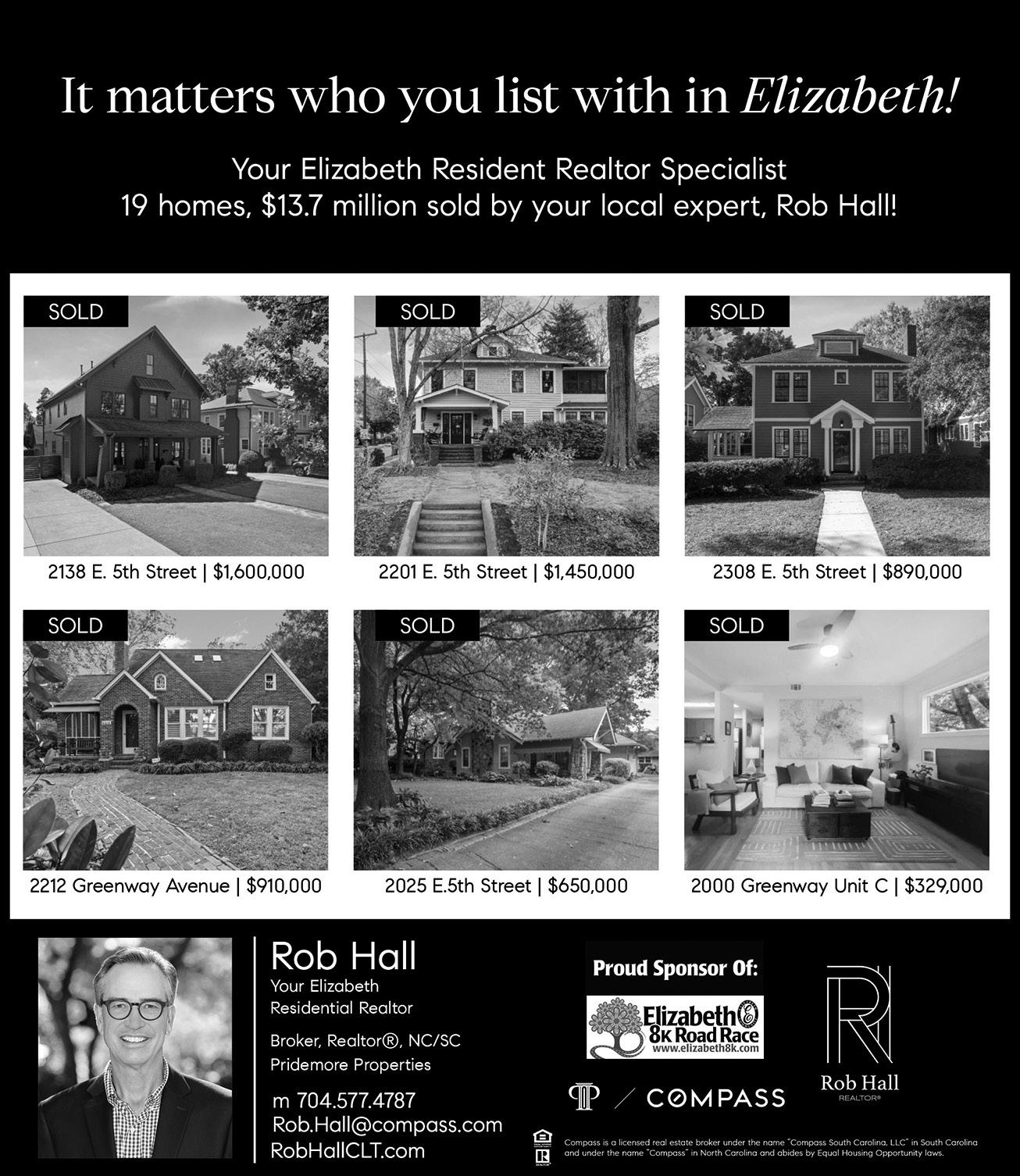
THE BUSINESS SECTION

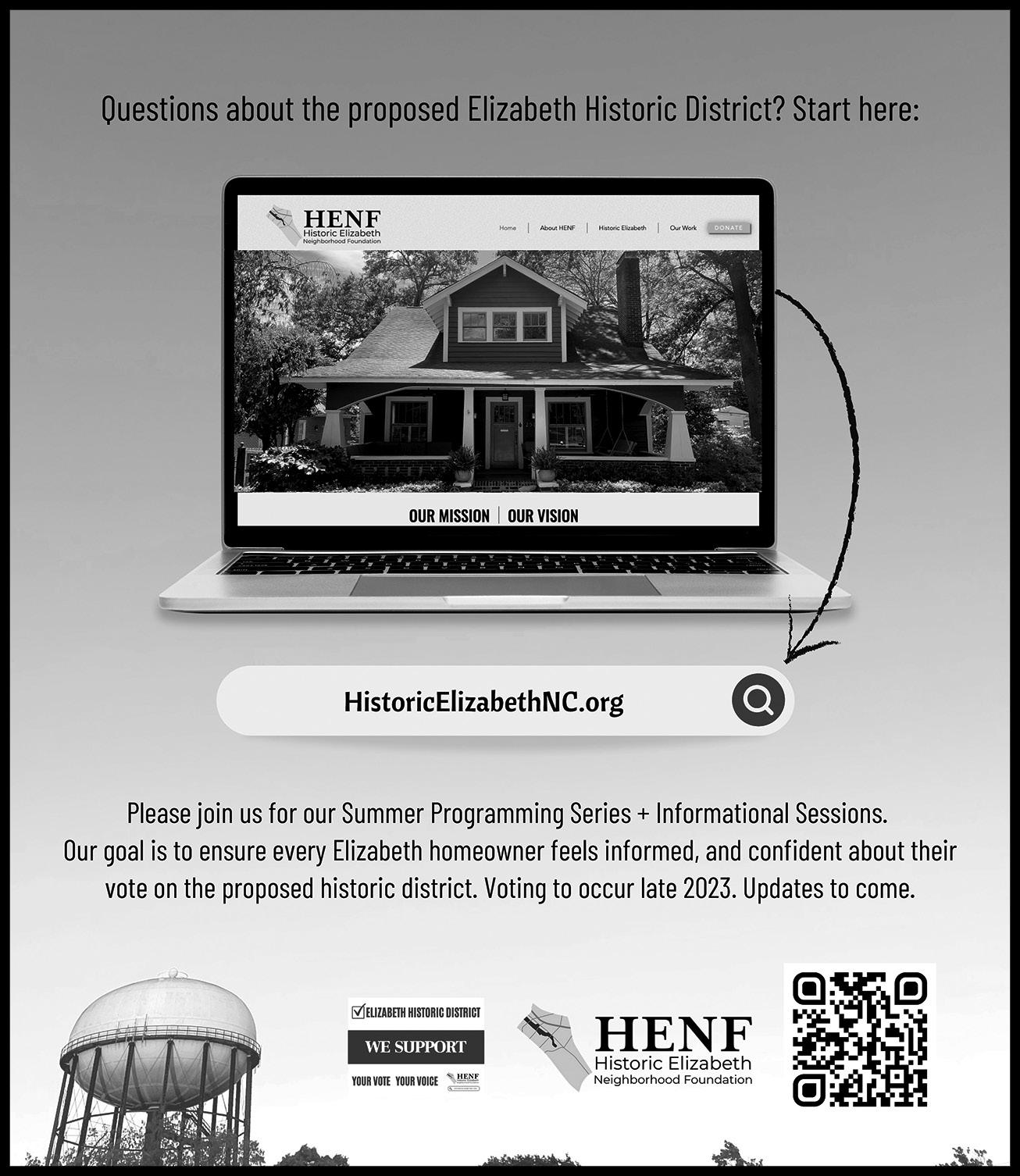
THE BUSINESS SECTION

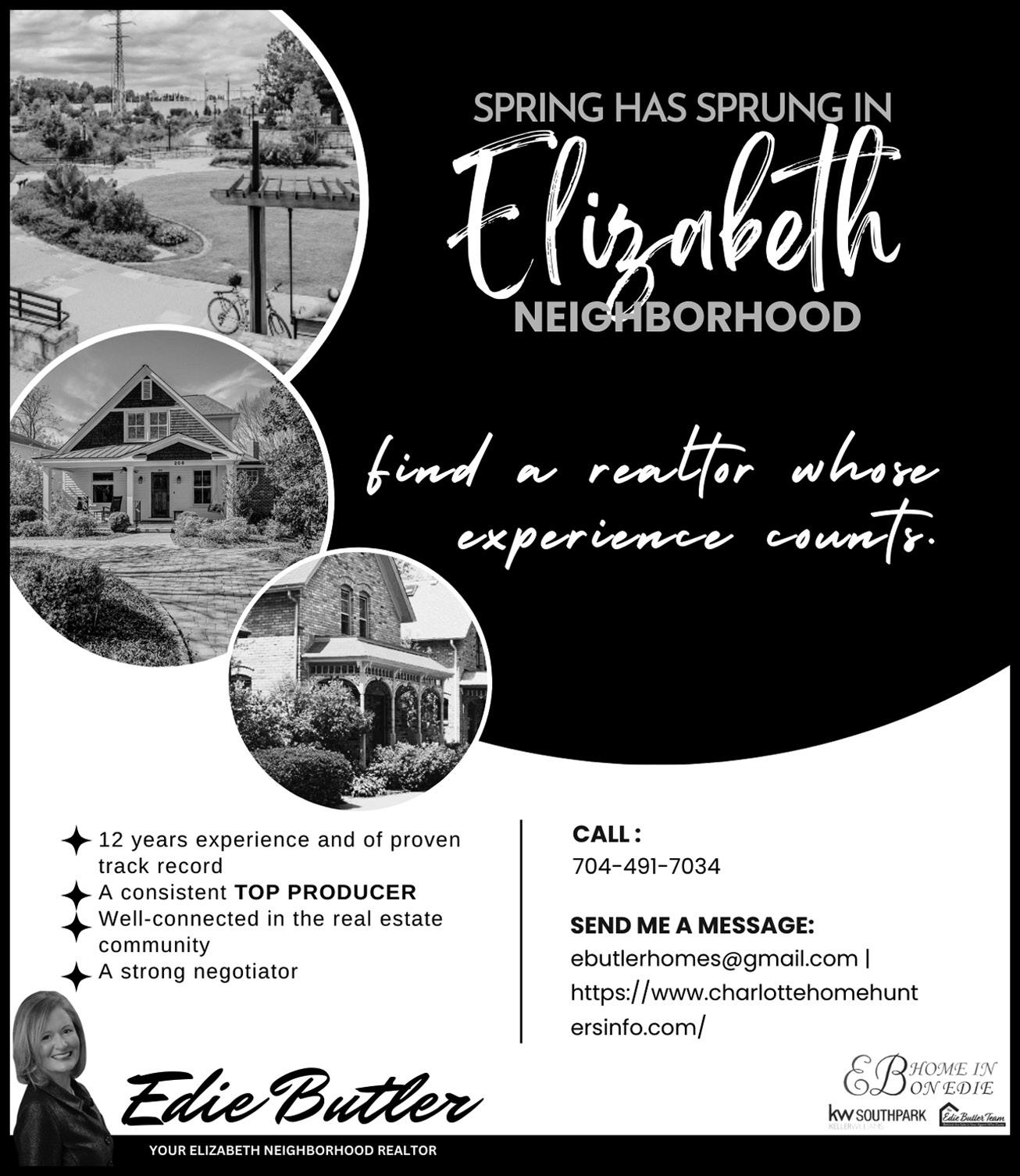
THE BUSINESS SECTION




THE BUSINESS SECTION


THE BUSINESS SECTION

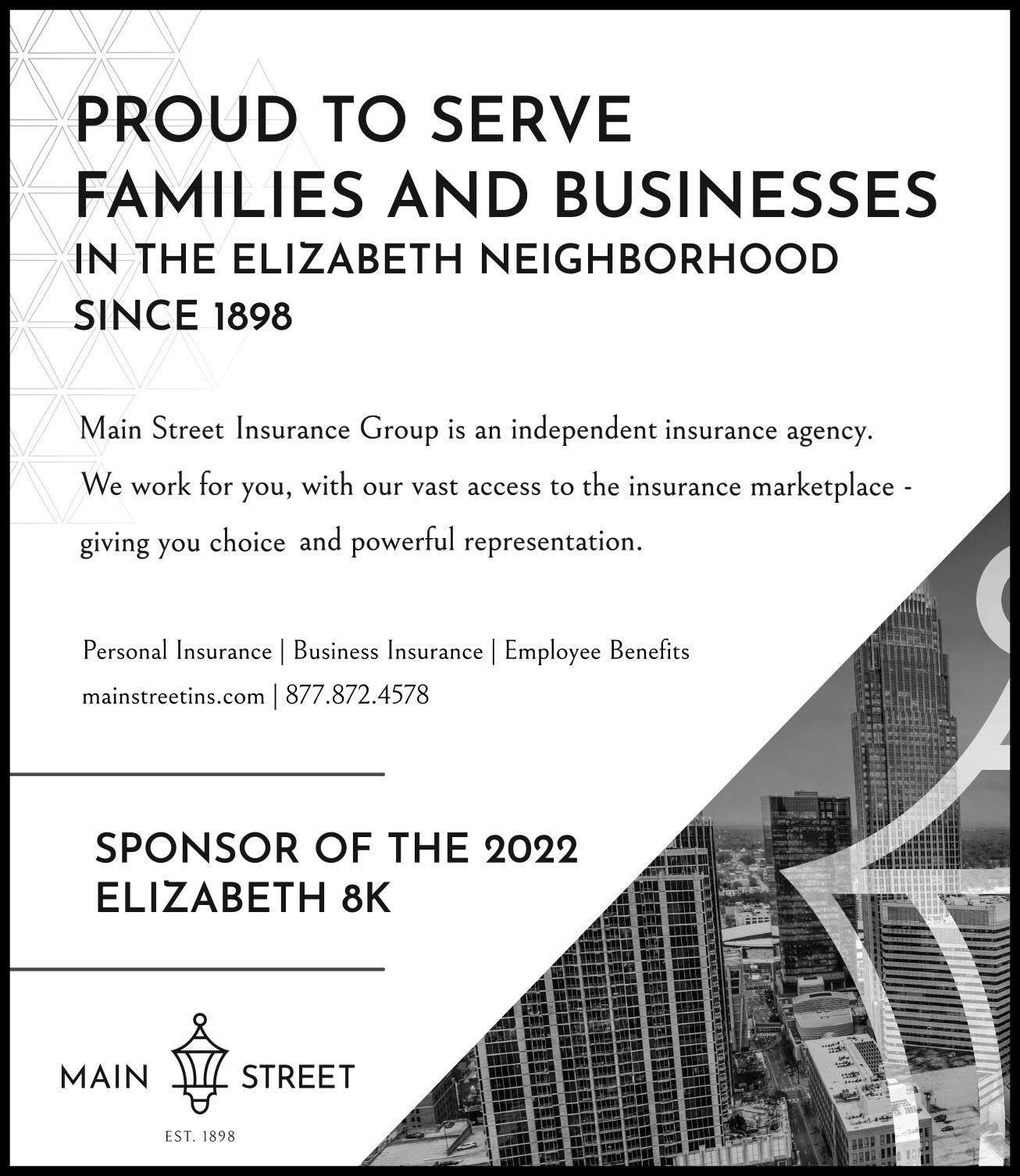
THE BUSINESS SECTION


THE BUSINESS SECTION




THE BUSINESS SECTION

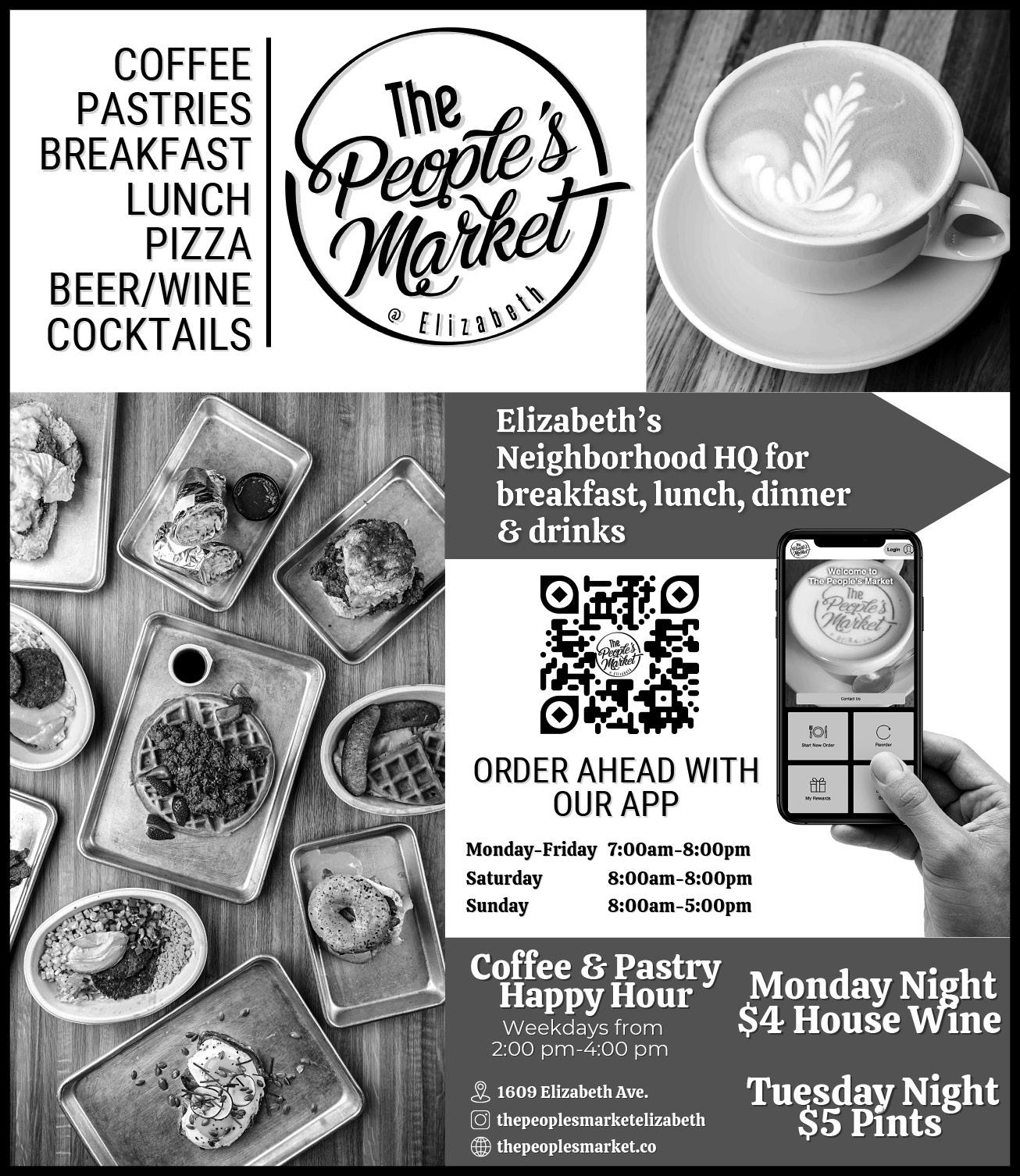
THE BUSINESS SECTION
RATES


FULL PAGE $380 or $1,360 for 4 consecutive issues
HALF PAGE $190 or $680 for 4 consecutive issues
QUARTER PAGE $95 or $340 for 4 consecutive issues
DEADLINES
Spring Issue: February 5 for March 1 publication

Summer Issue: May 5 for June 1 publication
Fall Issue: August 5 for September 1 publication
Winter Issue: November 5 for December 1 publication
newsletter@elizabethcommunity.com
THE BUSINESS SECTION


THE BUSINESS SECTION


THE BUSINESS SECTION


THE BUSINESS SECTION



THE BUSINESS SECTION




THE BUSINESS SECTION
Next advertising deadline: 5 August
Quarter page 641 x 743 pixels
Half horizontal 1306 x 743 pixels

Half vertical 641 x 1506 pixels
Full page 1306 x 1506 pixels
Send as b&w jpg or pdf @ 200 dpi


Please leave some space around the edge so your content doesn’t get cut off by our standard 4 point inner border.

THE BUSINESS SECTION

























 intrepid ECA volunteers. The ECA’s first ever drive through Easter egg hunt on Oakland Avenue next to Hawthorne Lane United Methodist Church was a great, if soggy, success. Hats off to Nikki Moore, Chris Mullis and the entire team of egg stuffers and deliverers.
Photo by Nikki Moore
intrepid ECA volunteers. The ECA’s first ever drive through Easter egg hunt on Oakland Avenue next to Hawthorne Lane United Methodist Church was a great, if soggy, success. Hats off to Nikki Moore, Chris Mullis and the entire team of egg stuffers and deliverers.
Photo by Nikki Moore



 The state of mind known as Stanleyville has faded. Photo by John McBride
The state of mind known as Stanleyville has faded. Photo by John McBride
 The Sunnyside Avenue station is the eastern terminus of the Gold Line. Photo by John McBride
The Sunnyside Avenue station is the eastern terminus of the Gold Line. Photo by John McBride
 Ted Nakato (right) at work in Menya Daruma. Photo by Ryan Allen
Ted Nakato (right) at work in Menya Daruma. Photo by Ryan Allen



 Left: some of the concept images by Pam Imhof for the bike lane mural project. This page: a gorgeous hydrangea bush dropping petals. Photo by John McBride
Left: some of the concept images by Pam Imhof for the bike lane mural project. This page: a gorgeous hydrangea bush dropping petals. Photo by John McBride





























